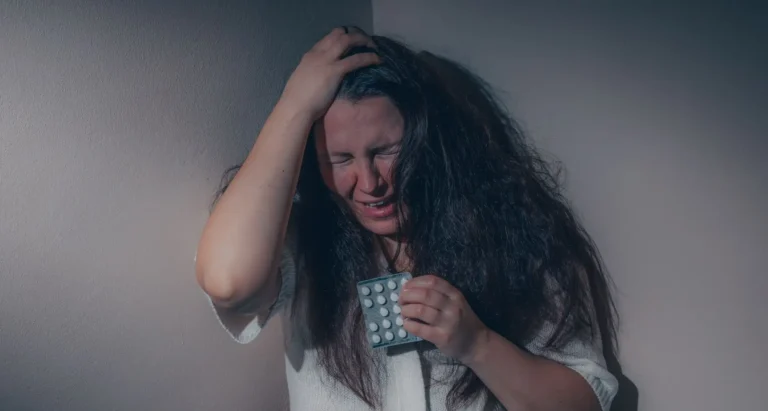Depression Facts & Myths – A Comprehensive Exploration
In mental health, depression stands as a complex and often misunderstood condition. Contrary to its pervasive nature, misconceptions about depression persist, contributing to the perpetuation of myths that hinder both understanding and effective coping mechanisms. Depression, characterized by persistent feelings of sadness, hopelessness, and a lack of interest in daily activities, affects millions worldwide. The enigma surrounding depression stems from its multifaceted nature, intertwining biological, psychological, and environmental factors.
These complexities create a breeding ground for myths, as societal misunderstandings and stigmas often overshadow the genuine causes and symptoms of this prevalent mental health disorder. Dispelling these myths is crucial in fostering a more informed and compassionate approach to supporting those affected by depression.
What is Depression?
Depression is more than just a passing bout of sadness; it is a profound mental health disorder that profoundly impacts an individual’s thoughts, emotions, and overall well-being. Often misunderstood as a mere consequence of personal weakness or a fleeting mood, depression is a clinically recognized condition with a spectrum of severity.
It can manifest in various forms, ranging from persistent depressive disorder and major depressive disorder to seasonal affective disorder. The intricate interplay of genetic, biological, environmental, and psychological factors underscores the complexity of depression.
Understanding its complex nature is crucial for dispelling myths and fostering a compassionate dialogue that paves the way for accurate diagnosis, effective treatment, and supportive environments for those navigating the challenges of this mental health condition.
Myths about Depression
Myths about depression often cast shadows that hinder understanding and support for those grappling with this complex condition. Exploring these misconceptions is essential for fostering a more compassionate and informed society. Let’s understand some prevalent myths that surround depression, shedding light on the realities of this mental health challenge.
Myth: Depression is just a prolonged state of sadness
Reality: Depression encompasses a range of symptoms, including persistent sadness, but it goes beyond temporary emotional lows. Individuals with depression often experience changes in appetite, sleep patterns, and cognitive function. It’s a complex mental health disorder that requires clinical attention.
Myth: People can snap out of depression if they try hard enough
Reality: Depression is not a matter of willpower or personal effort. It’s a medical condition influenced by biological, genetic, and environmental factors. Expecting someone to “snap out of it” oversimplifies the challenges they face and undermines the need for professional support.
Myth: Only traumatic events can cause depression
Reality: While trauma can be a trigger, depression’s origins are diverse, involving a combination of genetic predisposition, brain chemistry, and life circumstances. Understanding the complexity of its causes is crucial for dispelling the notion that only extreme experiences lead to depression.
Myth: Seeking help for depression is a sign of weakness
Reality: Seeking help for depression is a courageous and proactive step towards recovery. Mental health professionals provide valuable support, offering therapeutic interventions and strategies to manage symptoms. It is a strength to acknowledge the need for assistance.
Myth: Depression only affects certain demographics
Reality: Depression does not discriminate based on age, gender, socioeconomic status, or background. It can affect anyone, and dispelling this myth is essential for promoting inclusivity and understanding the widespread impact of depression.
Myth: Medication is the only effective treatment for depression
Reality: Treatment plans for depression are personalized and may include a combination of psychotherapy, lifestyle changes, and, in some cases, medication. Each individual’s needs vary, and a holistic approach is often the most effective.
Myth: Positive thinking alone can cure depression
Reality: While cultivating a positive mindset is beneficial for overall well-being, it’s not a standalone cure for depression. Professional interventions, such as therapy and, if necessary, medication, are integral components of an effective treatment plan.
Myth: Depression is just a phase that will pass with time
Reality: Depression is a serious and persistent mental health condition that requires attention and care. Ignoring it or assuming it will naturally resolve can lead to worsening symptoms and hinder the opportunity for timely intervention.
Myth: People with depression are lazy or unmotivated
Reality: Depression can significantly impact energy levels and motivation, making daily tasks challenging. Labeling individuals as lazy oversimplifies the impact of this mental health disorder and contributes to harmful stigmas.
Myth: You can’t prevent depression
Reality: While not entirely preventable, adopting a healthy lifestyle, building strong social connections, managing stress, and seeking support can contribute to overall mental well-being. These proactive measures may reduce the risk of developing depression and enhance resilience.
Facts about Depression
Understanding depression involves unraveling the intricate web of truths that surround this prevalent mental health condition. Here, we delve into key facts about depression, shedding light on the realities to foster awareness and promote a more informed approach to mental health.”
Depression is a Global Challenge: Depression is a leading cause of disability worldwide, affecting people of all ages and backgrounds. It transcends cultural, geographical, and socioeconomic boundaries.
Diverse Symptomatology: Depression manifests in various ways, encompassing emotional, cognitive, and physical symptoms. These may include persistent sadness, changes in appetite, sleep disturbances, and feelings of hopelessness.
Biological Basis: Research indicates that depression has a biological basis, involving imbalances in neurotransmitters like serotonin. Understanding the neurobiological aspects helps destigmatize the condition.
Prevalence Across Age Groups: Contrary to the misconception that it only affects adults, depression can emerge at any age, including childhood and adolescence. Early recognition and intervention are crucial for effective management.
Connection to Chronic Illness: Depression often coexists with chronic conditions, such as diabetes or heart disease. Managing both mental and physical health is essential for overall well-being.
Genetic Predisposition: Genetic factors play a role in susceptibility to depression. Individuals with a family history may be at a higher risk, emphasizing the importance of a holistic understanding of the condition.
Impact on Daily Functioning: Depression can significantly impair daily functioning, affecting work, relationships, and personal well-being. Recognizing these challenges is vital for promoting empathy and support.
Risk of Recurrence: Depression is characterized by periods of remission and recurrence. Understanding the potential for relapse underscores the need for ongoing management and support.
Gender Disparities: While depression can affect anyone, there are gender disparities in its prevalence. Women, on average, are more likely to experience depression than men, highlighting the importance of addressing gender-specific factors.
Holistic Treatment Approaches: Effective treatment often involves a combination of psychotherapy, medication, lifestyle adjustments, and social support. Tailoring interventions to individual needs enhances the likelihood of successful outcomes.
Is Depression a Normal Part of Life?
While everyone may encounter periods of sadness or low mood, clinical depression is characterized by persistent and pervasive symptoms that significantly impair daily functioning. It’s essential to recognize that experiencing occasional sadness is a normal and natural aspect of the human experience.
However, when these feelings intensify, persist for an extended period, and interfere with one’s ability to lead a fulfilling life, it may indicate a more serious mental health condition. Understanding the distinction between ordinary emotional fluctuations and clinical depression is vital for fostering empathy, reducing stigma, and encouraging those affected to seek appropriate support and treatment.
What Age are People More Depressed?
The prevalence of depression is not confined to a specific age group, as it can affect individuals across the lifespan. While it’s often associated with adulthood, depression can emerge at any age, including childhood, adolescence, and later stages of life.
Factors such as hormonal changes, life transitions, and societal pressures contribute to variations in the onset of depressive symptoms. Adolescence is recognized as a period of increased vulnerability, with hormonal fluctuations and the challenges of identity formation playing a role.
Additionally, older adults may face unique stressors such as health issues and social isolation. Recognizing that depression can manifest at different life stages underscores the importance of age-sensitive approaches to diagnosis, intervention, and support, promoting mental well-being throughout the entire lifespan.
Conclusion
Depression is a dynamic mental health condition that transcends age boundaries, impacting individuals at various stages of life. Understanding that depressive symptoms can manifest differently based on age-related factors is crucial for fostering a nuanced and compassionate approach to mental health. By dispelling myths, acknowledging the diverse realities of depression, and promoting age-sensitive awareness, we pave the way for a society that is better equipped to recognize, understand, and support individuals navigating the complexities of this pervasive mental health challenge.







